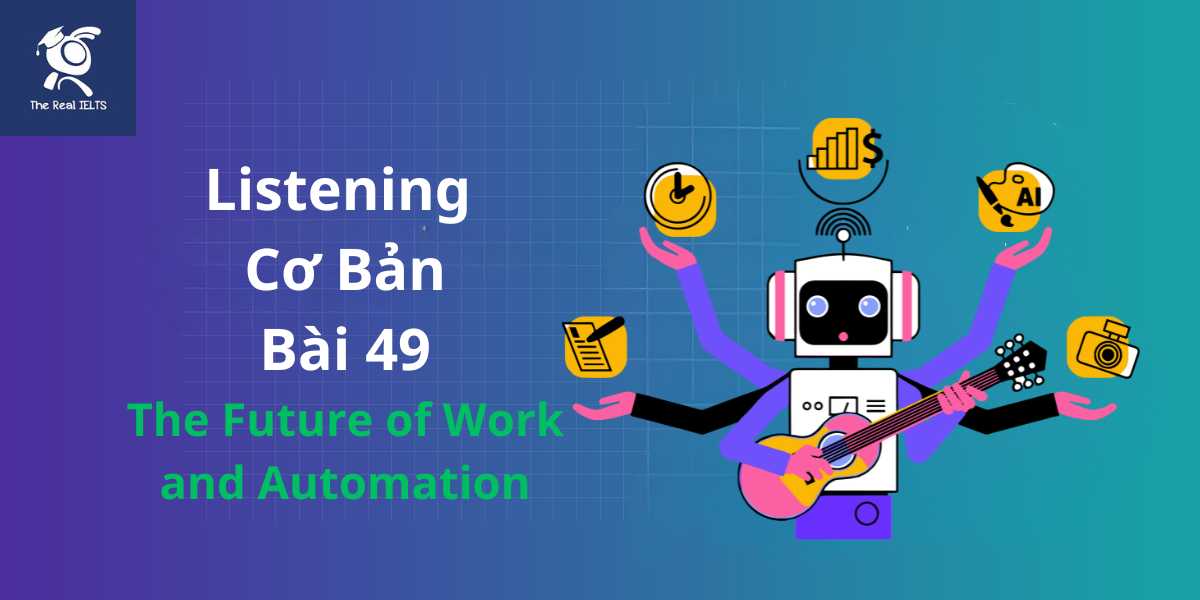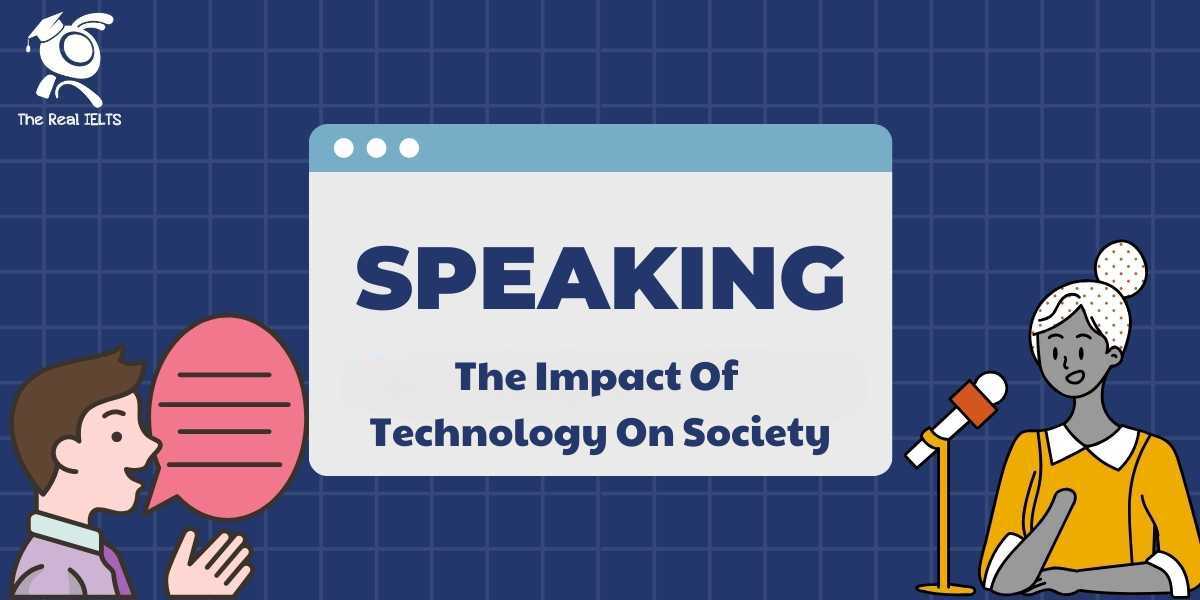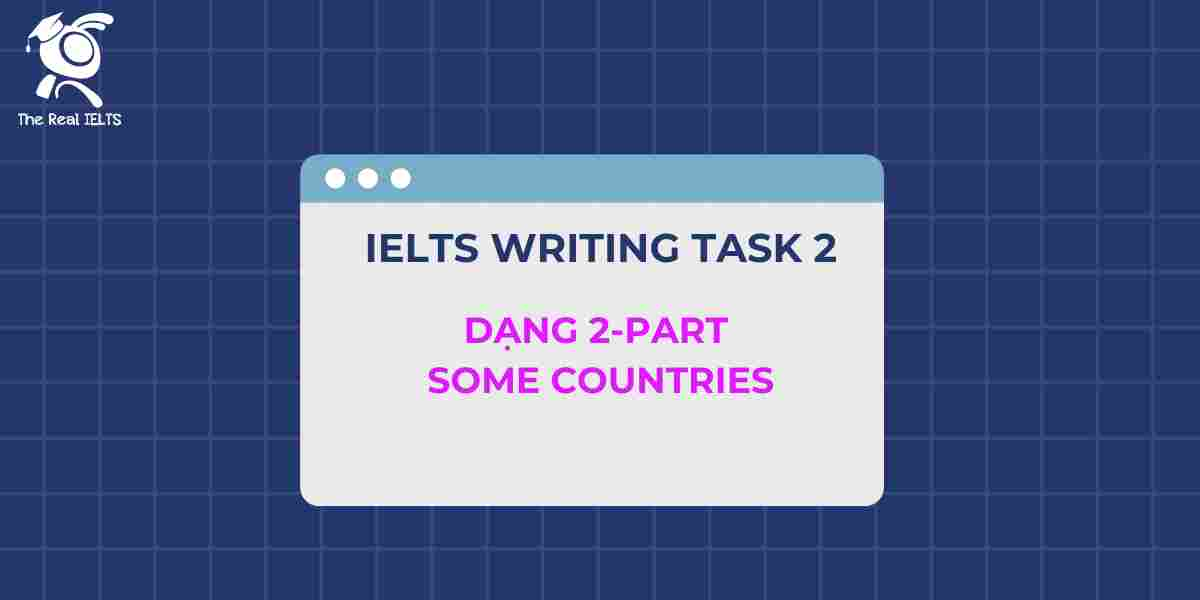Bài Listening trong phần này có chủ đề là Tương lai của Công việc tự động hóa. Ngay dưới đây là phần nghe (Listening), các bạn hãy nghe đi nghe lại nhiều lần để làm tốt phần trả lời câu hỏi ở dưới.
Đọc thêm: Học IELTS từ 0 lên 6.5 mất bao nhiêu tiền?
Bài Listening
Question
Section 1: Introduction to Automation
- What are the main drivers of workplace transformation mentioned in the listening passage?
- What are the potential benefits of automation according to the speaker?
- What challenges does automation pose for workers?
- What solutions does the speaker suggest to address the challenges posed by automation?
Section 2: Case Studies in Automation
- What specific tasks have robots taken over in the manufacturing industry?
- How has automation impacted job opportunities in the manufacturing industry?
- In the healthcare industry, what tasks have been automated?
- How has automation affected the quality of care in the healthcare industry?
Section 3: The Future Outlook
- What future technologies are mentioned as expanding the role of automation?
- How might self-driving cars impact the transportation industry?
- What benefits do AI algorithms provide in office environments?
- What new job opportunities are expected to arise from the integration of advanced technologies?
- Who does the speaker believe should collaborate to prepare the workforce for future changes?
Answer
Section 1: Introduction to Automation
- The main drivers of workplace transformation are advancements in artificial intelligence, machine learning, and robotics.
- The potential benefits of automation include increased productivity and economic growth.
- The challenges automation poses for workers include significant risks to job security, especially for those in manual and repetitive roles.
- The speaker suggests reskilling and upskilling the workforce to address the challenges posed by automation.
Section 2: Case Studies in Automation
- In the manufacturing industry, robots have taken over tasks such as welding, painting, and assembling parts.
- Automation has led to job losses for many factory workers, but companies are investing in retraining programs to help displaced workers transition to new roles.
- In the healthcare industry, tasks such as managing patient records, scheduling appointments, and assisting in surgeries have been automated.
- Automation has improved the quality of care in the healthcare industry by allowing healthcare professionals to focus more on patient care rather than administrative tasks.
Section 3: The Future Outlook
- Future technologies mentioned include autonomous vehicles, advanced robotics, and AI-driven data analysis.
- Self-driving cars could revolutionize transportation by reducing the need for human drivers.
- AI algorithms assist with complex decision-making processes, allowing employees to focus on strategic and creative tasks.
- New job opportunities are expected in tech development, maintenance, and sectors requiring human oversight.
- The speaker believes that educational institutions and governments should collaborate to prepare the workforce for future changes.
Audio Script
Section 1: Introduction to Automation
Listening Script:
You will hear an expert talking about the future of work and automation. Listen carefully and answer the questions below.
“In the coming decades, automation is expected to revolutionize the workplace. This transformation will be driven by advancements in artificial intelligence, machine learning, and robotics. Many routine tasks currently performed by humans will be taken over by machines. This shift raises both opportunities and challenges. On the one hand, automation can lead to increased productivity and economic growth.
On the other hand, it poses significant risks to job security for many workers, especially those in manual and repetitive roles. To mitigate these risks, there is a growing emphasis on reskilling and upskilling the workforce. By acquiring new skills, workers can adapt to the changing job market and find new opportunities in more complex and creative fields.”
Section 2: Case Studies in Automation
Listening Script:
Listen to two case studies about how automation has impacted different industries. Answer the questions that follow.
Case Study 1: Manufacturing Industry
“In the manufacturing industry, automation has been a game-changer. Automated assembly lines and robotic arms have drastically reduced the need for human labor in certain processes. For instance, car manufacturing plants now use robots for welding, painting, and assembling parts. This has led to faster production times and lower costs. However, it has also resulted in job losses for many factory workers. Companies are now investing in retraining programs to help displaced workers transition to new roles within the industry.”
Case Study 2: Healthcare Industry
“In contrast, the healthcare industry has seen automation improve efficiency without necessarily reducing the workforce. Automated systems are used to manage patient records, schedule appointments, and even assist in surgeries. These advancements have allowed healthcare professionals to focus more on patient care rather than administrative tasks. As a result, the quality of care has improved, and patient outcomes have become better. The demand for healthcare workers remains high, but the nature of their work is evolving to include more interaction with technology.”
Section 3: The Future Outlook
Listening Script:
Now listen to the final part where the expert discusses future trends in automation and work.
“Looking ahead, the role of automation in the workplace is set to expand even further. Emerging technologies such as autonomous vehicles, advanced robotics, and AI-driven data analysis will create new possibilities. For example, self-driving cars could revolutionize transportation, reducing the need for human drivers. In offices, AI algorithms will assist with complex decision-making processes, freeing up employees to concentrate on strategic and creative tasks.
Despite the potential for job displacement, the integration of these technologies is expected to generate new jobs in tech development, maintenance, and other sectors that require human oversight. It is crucial for educational institutions and governments to work together to prepare the workforce for these changes, ensuring that the benefits of automation are broadly shared across society.”
Học lại bài cũ: Bài tập Listening 48: The Psychology of Motivation.















